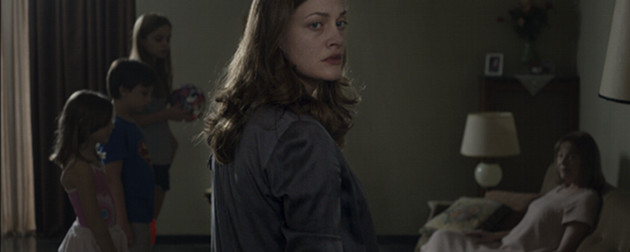
(Originally posted in now-defunct student e-zine FourFrame, under the title “Sin City: a Misogyny to Pass On”)
As a comic book fan, I am not without gratitude to Frank Miller. When Batman was starting to dwindle in 1986, it was Miller’s The Dark Knight Returns that spring-boarded a reinvigoration of and new respect for the character that cannot be over-stressed. Sadly, he is also very much known for using comics – and more recently films – as platforms for his own ugly socio-political ideology. Sin City: A Dame to Kill For is absolutely no exception.
Sin City: A Dame to Kill For sets us in territory immediately familiar to watchers of the first film. Its multiple narrative structure shares characters between stories, in doing so making it difficult to follow for those who hadn’t seen the first film. The twisting chronology in fact made it rather difficult for me, someone who had. Frankly, I’m still not sure that a lot that happens in this sequel is physically possible, even within the limits of the Sin City universe: if Nancy (Jessica Alba)’s revenge narrative in this film is supposed to be set 4 years after the events of the first film, either Marv (Mickey Rourke)’s story from the first one must have spanned over four years or he has mysteriously come back to life after being sent to the electric chair… It usually helps when a film doesn’t distract me with such glaring narrative issues, and yet I had this thought stuck in my head for pretty much the whole 100 minutes. On perhaps a shallower note, I also refuse to acknowledge that back-alley plastic surgery would ever change Josh Brolin into Clive Owen. Plastic surgery has worked many a miracle, but as yet, it does not work magic.
Visually speaking, A Dame to Kill For is objectively impressive and, though I saw it in 2D, the depth of field was rich enough to make seeing it in 3D a worthwhile experience for someone who loves the film’s look. Personally, comic and noir fan as I am, I don’t care for the visuals of the Sin City franchise – the lack of rhyme and reason in terms of what gets colourized cheapens the effect whilst the digital sheen only detracts from the allegedly gritty ambiance: it becomes the rather telling embodiment of style over substance. I said it regarding the first film and I shall say it again now: frame-for-frame similarity with the source material is nothing to be proud of; this is a film, not a comic book, different media require different approaches.
The brief for: A Dame to Kill For was very clearly “like the first one, but more,” and certainly, the film strives to be more of everything: more violent, more sexual, and more black-and-white-film-with-random-things-colourized-for-no-discernible-reason. Whilst it certainly does achieve the third – very distractingly so – the most violent element of this film is its out-and-out misogyny. Granted, the original Sin Citywas hardly ever going to meet the approval of Molly Haskel, but its sexism was largely rooted in its constant “damsel in distress” tropes in the face of hyperbolised male chauvinism, and even the strongest of its female characters are viewed solely through an exaggerated male gaze. A Dame to Kill For moves away from traditionally sexist trivialisation of femininity to an abundant suspicion and hatred of it. Female characters are almost solely connected to images of manipulation and duplicity and, regularly, it seems only the female characters are the ones who will be punished for their dark ambition, regardless of it being a trait shared by literally everyone in the film. The most angering moment for me was in the final story, in which Nancy seems to symbolically shed her femininity in order to “man up” for her revenge plot by cutting her hair and then soon after cutting her face (the disfigurement of women is a common theme in the film). This would be bad enough, but it angers on yet another level as she then uses her new facial scars to manipulate Marv into doing most of the dirty work for her, anyway. In Miller’s mind, even the heroines are to be mistrusted by the heroes.
To give credit where credit’s due, the film is not let down by the performances – in particular the newcomers such as Eva Green and Joseph Gordon-Levitt are as good as one should expect of such fine actors. Joseph Gordon-Levitt’s story (just like Jessica Alba’s) is completely new and takes direct cues from Casino Royale in working out how to make a poker game legitimately tense and atmospheric, though thankfully without the patronising narration explaining the rules. However, the notable absence of certain actors (Brittany Murphy and Michael Clarke Duncan both died between films, being respectively written out and replaced very capably with Dennis Haysbert) does make it apparent just how long it has been since the first Sin City film came out: nine years ago. I don’t remember anyone crying out for a sequel and, judging from how much it is currently struggling at the box office, it seems nobody was. At the end of the day, Sin City: A Dame to Kill For acts more as documentation for the steady increase of Frank Miller’s ultra-right-wing misogyny than any form of legitimate entertainment and, quite frankly, his article on Occupy Wall Street was more than enough documentation for me. Want to watch a noirish comic book movie? Watch Tim Burton’s Batman and Batman Returns. Watch The Crow. Hell, watch The Shadow. At least the film that almost killed Alec Baldwin’s career understood the difference between showing guts and having guts.
*


